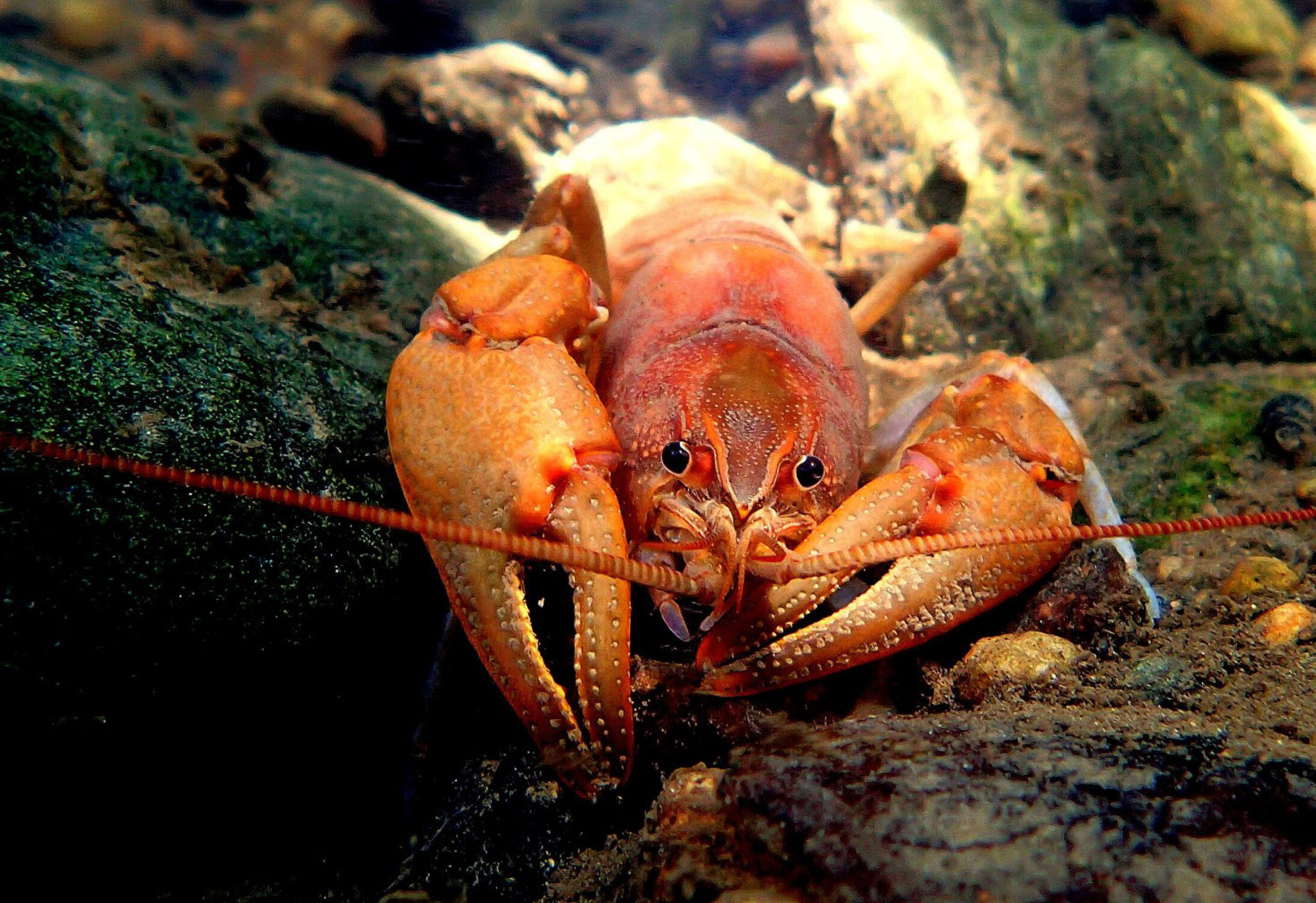Undergraduate researchers study the complexity of community ecology

Have you ever been part of a ‘complicated relationship’?
Branchiobdellid worms and crayfish sure have, according to the research of Bryan Brown, an assistant professor of biological sciences in the College of Science, and an affiliate of the Fralin Life Science Institute.
Brown studies these critters, which live in freshwater streams, as a model for the larger question he has about community ecology: Why do we find what we find where we find it?
“The answer to this larger ecological question lies in examining the complexity of the relationships that occur in any given ecosystem, and how they are driving the entire system,” Brown said. “If you have one relationship turn sour, or shift from symbiosis to parasitism and vice versa, it affects the entire ecosystem in very significant ways.”
During the summer of 2013, Brown brought on several undergraduate researchers to study the worm-crayfish model as well as other unique symbiotic relationships, as part of the Fralin Life Science Institute’s Summer Undergraduate Research Fellowship program.
This fall, the students are continuing in his lab as undergraduate researchers, gaining from the mentorship of Brown and James Skelton of Holly, Mich., a Ph.D. student in biological sciences in the College of Science who works closely with Brown.
Three students — Nigel Temple of Virginia Beach, Va., Sam Doak of Christiansburg, Va., and Meredith Leonard of Henrico, Va. — all majoring in biological sciences in the College of Science, examine the causes and effects of the crayfish-worm symbiotic model.
Temple’s project involves monitoring 28 crayfish habitats in Sinking Creek, to look for the effects of a shift from mutualism to parasitism. The worms serve as groomers or cleaners to the crayfish in exchange for nibbling on the crayfish at a rate that doesn’t harm the animal. However, if the worm population becomes too dense, the symbiosis is thrown out of balance and can become harmful to both species very quickly.
“We think that when mutualism switches to parasitism, the worm densities may either create a change in crayfish behavior, or create a change in crayfish diet, both of which can have a ripple effect throughout the aquatic community,” Temple said.
Doak’s project is to investigate the worm dispersal on crayfish hosts in eight artificial stream tanks, to determine the worms’ behavior in choosing hosts.
“We thought that the worms would spread out to re-populate,” Doak said. “But instead we are finding that because there are so many hosts to choose from, they select for the best host. In a tank of six crayfish, one crayfish tends to have a lot of worms on it, and the others tend to have slightly less.”
Leonard looks specifically at how the crayfish recognize and respond to new worms.
“We observed that young crayfish tolerate fewer worms than their older counterparts since their high molting rates supplement the cleaning that the worms would otherwise perform,” Leonard said. “Additionally, we found that worm size did not play a factor in the detection of the crayfish host.”
“This system is great for early-career researchers because it emphasizes that multiple perspectives are key,” Brown said. “The interaction between crayfish and branchiobdellid worms is fascinating in its own right and the students learn the importance of understanding the specifics of the system. However, we also try and keep them focused on the bigger picture — that their work is about more than just crayfish and worms. It’s also about using this system as a model to answer cutting-edge questions about symbioses that apply across many types of symbiotic interactions.”
Another student, Miranda Flood of Chesapeake, Va., a biological sciences major in the College of Science, examines the effects of the artificial water color enhancer Aquashade on zooplankton living in urban ponds. Aquashade is often used in recreational areas such as mini-golf courses.
“The SURF program gave me the opportunity to conduct research over the summer on projects that I may never have had the chance to be a part of,” Flood said. “Throughout my summer research I grew as a student and as a scientist because of the SURF program's events, research talks, research symposium, and its ability to make undergraduate research even more accessible to students than it already is at Virginia Tech. I was proud of the fact that the Brown Lab, including 3 other participating undergrads and myself, was able to serve as a large presence in the SURF program, and shine a light on ecological research.”







